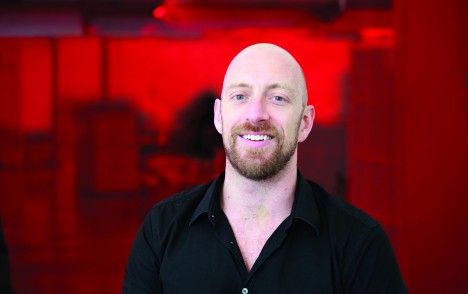The Voice – Australia’s best example yet of social TV
I am an addict of Channel Nine’s hit show The Voice. Such is the extent of my addiction I seriously think my housemate might kick me out of our apartment for the semi-frenzied yelling and tweeting that ensues in our lounge room each time the show airs.
It’s the first time in almost three years that such disagreement has resulted in less than civil behaviour towards one another, and it’s made me think it might be a microcosm of the large volume of online debate about the show and, correspondingly, an explanation for its success as a social TV experience.
 Monday night’s first live performances saw #thevoiceau trend worldwide on Twitter and the performance of contestant, Karise Eden, reach number one on the iTunes pop charts. Love or hate it, The Voice is arguably the best mainstream example of social TV we’ve seen so far in Australia
Monday night’s first live performances saw #thevoiceau trend worldwide on Twitter and the performance of contestant, Karise Eden, reach number one on the iTunes pop charts. Love or hate it, The Voice is arguably the best mainstream example of social TV we’ve seen so far in AustraliaThe driving force behind the show’s dramatic content is an idea that genuinely resonates and is something people want to share.
Unlike many reality shows that deliberately pit contestants against one another as the main source of drama, The Voice’s drama comes from the contestant’s passion for singing and a desire to pursue their dream. Some like Carmen Smith or Glenn Cunningham have established careers as back up singers and are attempting to make it as soloists. Others, like Karise Eden, tell a heart wrenching tale of once living on the streets to finding her passion for music through the loving encouragement of her foster parents.
They may all still be in competition with one another, yet what engages viewers is less a voyeuristic situational conflict engineered by the show itself but a series of pre-existing, authentic, personal stories helped along by the celebrity coaches.
Combine these tales of pursuing one’s passion with the fact that they’re (at least initially) being judged on their singing merits, and the contestants’ stories represent a powerful egalitarian idea to which we can relate in the pursuit of our own goals. It’s therefore something worth barracking for in social media or, in many cases, against; if you want a contestant’s dream to survive but don’t fancy Delta Goodrem much, then you’re surely not going to want to see them pick her as their coach and will voice your opinion.
The second reason the show enjoys such success is its approach to integrating social media conversations to influence the live content, as well as extending the show beyond merely the television screen. Whilst it’s not unusual for programs like the ABC’s Q&A to do things like display viewers’ tweets on the screen or have a social media manager amplify content with questions via a Facebook page, The Voice takes socialising content across multiple channels to another level.
Critical to this mission is Faustina Agolley’s role as V Room Host. Elsewhere referred to as “social media correspondent”, Agolley’s task is to drive the online conversation back into the live television broadcast and back out again. During Monday night’s show she mentioned the worldwide Twitter trending status, a tweet from Aussie rock band @thelivingendaus for Matt Hetherington’s cover of White Noise as well as generally commenting on other users’ feedback and releasing behind the scenes content of contestants to the show’s Facebook page.
The judges and contestants too are all very consciously active in social media, having conversations not only during but also after into the days following the live show. For most of the contestants this is a new behaviour – indicating the degree of importance that has been placed on it by the show’s producers and the strategy of furthering their personal stories across multiple channels beyond the broadcast slot.
Perhaps the best thing about it though is how well social media elements have been integrated into the show content, making it easy for people to get involved in the conversation at the appropriate time and using the best device platform. During Monday’s live show, viewers tweets about the performances were displayed on screen after the contestant had finished. They also handily displayed the usernames of the contestants own profiles so you could easily find and follow them – all done at a time when you’re more likely to engage after adjudicating their performance.
The choices available for influencing the show’s outcome are also perhaps the most extensive social integration we’ve seen, with viewers able to SMS, call, login to the Facebook page application or even cast a vote in social commerce style by purchasing a contestant’s’ performance from iTunes, counting as two votes.
Ultimately The Voice’s success in social media lies in thinking of itself not as a television broadcast on Mondays with social amplification but an ongoing, multi-channel experience with the right channel choices for the right elements of the story. Viewers are just as important as the contestants and judges in determining the way the stories evolve and, when given easy and multiple means for doing so at opportune moments are more likely to get involved. For brands looking to behave more socially it provides a great structure for thinking of the way communication can be crafted to meet the desires of users and owned content – one where there is no longer an “audience” but rather sets of participants with different needs.
Rodd Messent is Sputnik’s head of strategy



I wonder how much of the strategy was devised locally and how much was ported over from the original US format?
The Voice was a social media hit before the live show. If anything, thus show fell a little flat.
“Unlike many reality shows that deliberately pit contestants against one another as the main source of drama, The Voice’s drama comes from the contestant’s passion for singing and a desire to pursue their dream.” How are all talent quests (idol) not about perusing a dream of a singing career?
I reckon the success of the show was in the judges. Big names. And for the first few eps, they were being judged & accountable for something (swinging that big chair!).
@Oscar: they probably indeed took quite a number of learnings from the US version and applied them here – however the show was originally created by Talpa in the Netherlands.
Don’t know we are talking about social media as if it something new and that social media made the show a success. TV has always been social, Its what gets people talking everywhere even on things like telephones, at work, at lunch and on other TV shows. Also the headline acts, celeb judges and brilliant TV pre Promotion and nines use of everything from breakfast television and ACA and even TT just nailed it. Goes to show TV is the only media that actually gets society talking no matter what the platform its discussed on, but TV drove this not social media.
Cheers Rodd, I’m intrigued by how Australia’s viewing and social media habits differ from the rest of the world
One critical element social media brings to the Voice (or any show) is that it give the audience a compelling reason to watch the show in real time instead of recording the show and watching it later.
This is obviously important to advertisers who want their ads watched, and to the media seller who can be confident about their viewer numbers.
@Tabitha to say ‘TV drove this not social media’ is incorrect.
Nether tv nor social media drove anything. It’s success is people driven.
If the content is good it will get talked about, of course.
But if it isn’t then something else will get talked about instead.
Think about the behaviours not the channels or tools.
Shows like The Voice are winning because they are designed around behaviours.
There is a lot of publicity and cross promotion on the English version as well. There have been (according to the Mail online) that will i am spends too much time tweeting instead of watching the acts as he tries to maintain interest in his own acts. They have great judges on their show, Jesse J, Tom Jones but the interest level has dropped now that it is just another talent show. Viewers only liked the show for the turning shows I think.
I do laugh when I read this kind of analysis. As someone else points out The Voice is a dressed up Talent Show presented by well known faces. Nothing less, nothing more. To think otherwise means you’ve also been sucked into the TV vortex of bright lights, crocodile tears and photogenic presenters.
As for your contributor’s remarks ‘ The Voice’s drama comes from the contestant’s passion for singing and a desire to pursue their dream’…excuse me but isn’t that the whole point behind a Talent Show…
As we find in other forms of social media, the quality of content drives success not the the temporary ‘clicktivism mania’ the show might initially generate.
I think if social media made The Voice a success it’s because it offers what social media doesn’t – the human truth. Social media is full of people fluffing themselves up with carefully chosen snippets of ordinary lives or sharing cool things for the rub-off. But walk out on a stage and sing, in real time, and you’re alone with your humanity. For 2 uninterrupted minutes It’s the real deal, a person, full of fear and ambition with no Facebook or Tumblr or Twitter to hide behind. The rings of social media orbit this basic humanity rather than create it. And at the risk of oversimplifying, I reckon this talent show’s better because the talent’s better.
NB: Is there a special name for the actuall time taken to compose an apparently off-the-cuff tweet? Twasted time? Tweet lag?
which team are you for Rodd?
As for your contributor’s remarks ‘ The Voice’s drama comes from the contestant’s passion for singing and a desire to pursue their dream’…excuse me but isn’t that the whole point behind a Talent Show…
Exactly!! watching the clips back now shows how out of key all of the’singers’ are. the judges are not cirtiquing them making it even more ridiculous.Interest will wane as fast as it started. The most exciting part that drew everyone to the show was the blind auditions. Now that is gone, it is a very bad talent show. At least Australias got talent showcases various talents and exciting ones at that. it is a real variety show and Kyle is really hilarious!! something to watch at least not the judges on the voice, who are just pretending to be nice.not saying what they really feel
I wish we would get the show in the states. I would watch it just to see Keith Urban. Keith is so talented, kind and does’nt have a big ego. I was surprised Keith wasn’t a big star in Australia, I don’t get it.